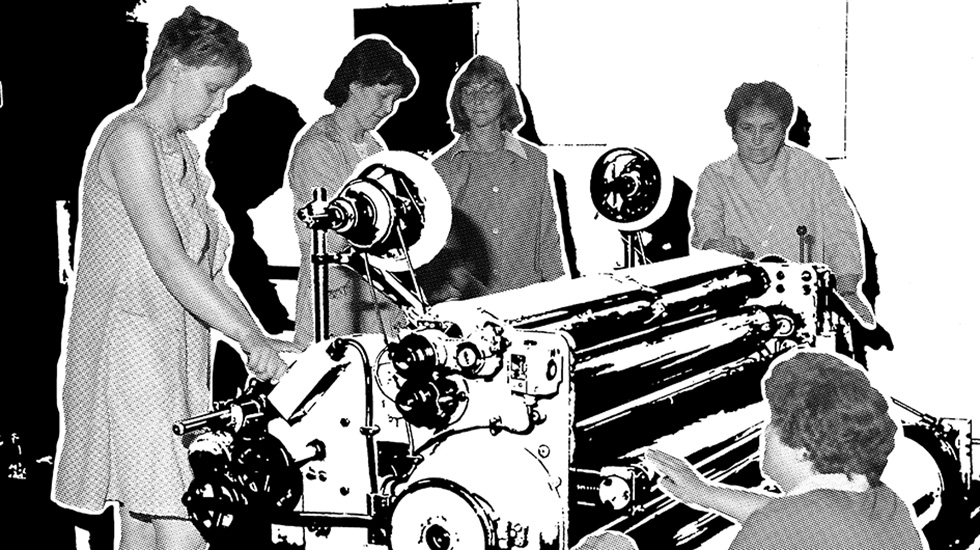MADE IN WOLFEN
The world’s first synthetic man-made fiber is born in Wolfen: in 1934, chemist Emil Hubert develops a fiber based on polyvinyl chloride, or PVC for short, ushering in a new era in the history of textile fibers. Experiments with viscose had already been carried out here in the 1920s, while research into polyamide was conducted in parallel both in Wolfen and in the USA in the 1930s. The synthetic fiber, also known as “Dederon”, was used to make easy-care and hard-wearing clothes, aprons, shopping bags, carpets, comforter covers and curtains, which were a natural part of everyday life in the GDR. The film factory in Wolfen quickly became not only the backbone of the fiber industry in the GDR, but also the largest pulp mill with an attached viscose factory in the world.
Students at the BURG Giebichenstein University of Art and Design Halle are exploring the past and present as well as the potential of various man-made fibers in an exhibition that complements the fiber section of the Industrial and Film Museum in Wolfen. To this end, they conducted intensive research in the museum archive and at the textile company SOEX and held many discussions. The exhibition tells of the identities of the workers, uses brigade diaries to investigate, portrays the Jewish chemist Dannenberg, provides insights into the self-image of women in the GDR, the changes to the landscape caused by industry and political change, takes an aesthetic approach to chemical fiber recycling and explores the possible intertwining of Bauhaus and Wolfen in the 1920s. The materiality, design and staging of various textiles play an important role in the exhibition.
With students Maria Valentina Dinca, Nena Ellermann, Nathalie Hebbering, Paula Holzhauser, Wiebke Lendewig and Anna Weitzel from Burg Giebichenstein University of Art and Design Halle and students Emmelie Damerow, Lea Hoffmann, Sarah Marée and Leonie Rinze from Leipzig University of Music and Theatre.
Accompanied by Henrike Schmitz, Prof. Bettina Göttke-Krogmann and Prof. Barbara Büscher.



